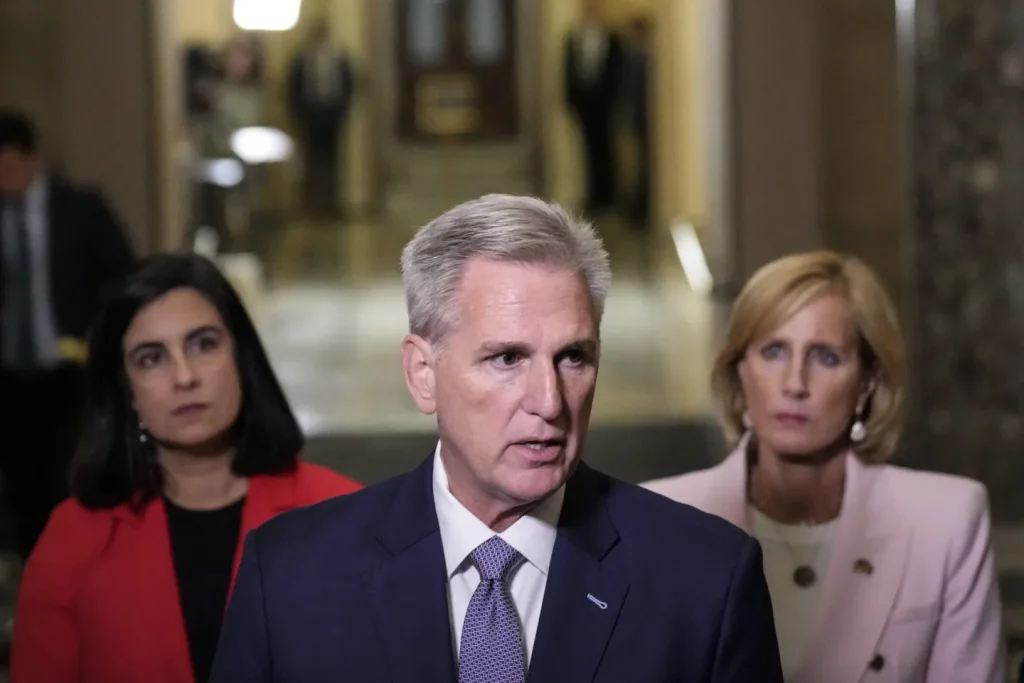
Legislators have a mere four days left to approve the yearly budget, failing which the U.S. government will experience its fourth partial shutdown this decade. Jan Hatzius, Chief Economist and Head of Global Investment Research at Goldman Sachs, predicts that an agreement is unlikely. Hatzius forecasts a government shutdown lasting two to three weeks, starting from 1 October. Source.
“In recent months, the likelihood of a government shutdown has seemed increasingly probable, and we now believe there’s a 90% chance of it happening,” Hatzius stated in a note released on Wednesday. “Although there’s still a slim chance that a last-minute funding extension could be reached before 30 September, progress has been minimal and time is running out.”
Hatzius contends that the shutdown may persist for two to three weeks, as it would require mounting political pressure from missed salary dates for active-duty military personnel on 13 October and 1 November, as well as a decline in critical services like airport security and border patrols, for Congress to reach a compromise. “Should the government cease operations on 1 October, a swift reopening seems improbable due to entrenched political stances,” he cautioned.
A team of economists from Nomura, headed by Senior Economist Aichi Amemiya, supported Hatzius’s viewpoint in a note published on Wednesday, stating, “We anticipate the government shutdown to last for one to two weeks, but a more extended shutdown cannot be ruled out.”
“The narrow majority held by Republicans in the House of Representatives complicates the process of reaching a mutual agreement,” they elaborated.
The sole alternative to avert a shutdown is a short-term funding extension, commonly known as a “continuing resolution” or CR. However, Hatzius revealed that both the Senate and the House are pushing CRs laden with somewhat contentious provisions, making their passage unlikely. “Even if a short-term extension is enacted, these budgetary issues will resurface in the final quarter of the year,” he warned.
A partial government shutdown takes place when the annual budget fails to get Congressional approval. Comprising 12 individual appropriations bills, no agreement has been reached this year. If the deadlock continues, as experts like Hatzius predict, nonessential government functions will halt from 1 October, affecting the salaries of nearly 4 million federal employees and cutting various services ranging from small business loans to food safety inspections. However, mandatory spending programmes like Medicare, Medicaid, and Social Security will remain unaffected.
Since 1980, there have been 14 partial government shutdowns, but only three extended beyond a week—in 1995, 2013, and 2018-2019. While the economy has generally been resilient to the effects of partial government shutdowns, the impact could be more severe this time around. Goldman Sachs estimates that for each week the government is shut, there will be a 0.2% reduction in GDP growth.
Furthermore, Hatzius warned that a government shutdown could delay the release of crucial data used by the Federal Reserve in formulating monetary policy. Jerome Powell, the Federal Reserve Chair, has committed to a “data-dependent” approach in setting interest rates to control inflation, but this could be hindered by the absence of essential data.
Complicating matters further, Hatzius noted that “multiple shutdowns are conceivable” due to the current political stalemate in Washington.
“The two parties remain significantly divided on spending plans, and any agreement to reopen the government post-shutdown is likely to be short-lived, thus raising the risk of another funding lapse before the year ends,” he cautioned.

